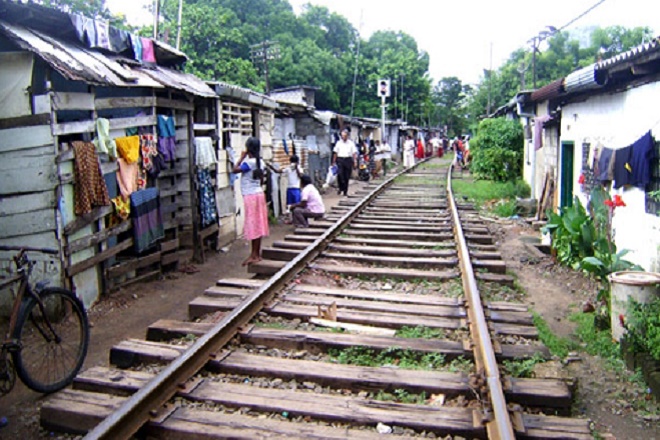Land acquisition in Colombo continues under militarized environment: CPA

Courtesy of wsws.org
Feb 02, 2016 (LBO) - The working class poor in Colombo endure rushed evictions and land acquisition under militarized civilian institutions, a system that has not entirely changed with a change of government, according to the Centre for Policy Alternatives (CPA).
"The previous government’s Urban Regeneration Programme, which is being continued by the present Government, aims to beautify the city and create a slum-free capital," the report states.
"The luxury spaces being developed and the lifestyles being promised, however, hide the heavy price that the working class poor continues to pay."
There was greater emphasis on relocation and land acquisition post-war, according to the report titled, The Making of a World Class City: Displacement & Land Acquisition in Colombo.
The land acquisition schemes offer compensation to the people affected -- nevertheless, they face lack of access to services, good schools for children and livelihood options when given just one option for relocation.
Even though the delinking of the UDA from the Ministry of Defence was a positive step under the yahapalanaya government, the process of de-militarising the UDA and the mindset of public officials and civilians alike requires "a sustained political commitment."
Military officers now dressed in civilian clothes, continue to make decisions and liaise directly with the public.
"The lack of transparency and accountability is an overriding concern," the report states.
"The difficulties of obtaining information and in the language of the person affected and misinformation in attempts to prejudice the rights and interest of the affected family, continue to be the main areas of dispute with the Urban Development Authority."
For instance, in Mews Street as well as 34 watte, the military were involved in forcing people out and demolishing homes. Eventually all persons in 34 watte were evicted except for four petitioners in a case now before the Court of Appeal.
Ninety one families living alongside St. Sebastian’s Canal in Maligawatte in 2014 were similarly forced to move.
"The military experience is egregious because the relocation took place due the rehabilitation of the St. Sebastian Canal under the the World Bank’s Metro Colombo Urban Development Project (MCUDP)."
Even though the CPA brought this to the attention of World Bank officials in a meeting in June 2015, the St Sebastian Canal residents have not been met by any World Bank representative and continue to deal with the UDA official assigned to them.
There is also confusion over official statistics.
UDA figures claim that a total number of 68,812 families live in 1,499 community clusters or underserved settlements. According to the Underserved Settlements Survey 2012 conducted by the Colombo Municipal Council and Sevanatha, 54.4 percent of settlements in Colombo fall into the category of ‘upgraded.’
Only 5.9 percent of settlements fall in to the category of ‘underserved’ and 0.3 percent fall in to the category of ‘extremely poor.’
The UDA states that over fifty percent of the Colombo city population lives in shanties, slums or dilapidated old housing schemes, which occupy nine percent of the total land extent of the city.
However this nine percent of land is being further densified in order to release the “economic corridors occupied by them”.
"Despite several demands over the years for a complete review and change in approach and thinking of the URP, we see no effort to do so from this Government either."
"What is required from policy makers and implementing authorities is not just a change in their approach or even conceptualising of these projects, but a change in also how they view the working class poor."
The report can be viewed here
